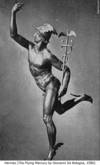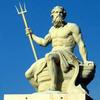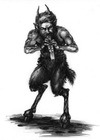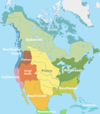ALL Flashcards
(151 cards)
What are the levels of information sensitivity at the EU?
- Unclassified: Information which could be or has been made public. Authorisation should still be sought to release to the public
- EUCI: So sensitive that it could cause damage to the EU or MS if disclosed to an unauthorised person.
What are the classifications of EUCI?
Highest to lowest:
- EU Top Secret [EU-TS] / Tres Secret UE [TS-UE]
- EU Secret [EU-S] / Secret UE [S-UE]
- EU Confidential [EU-C] / Confidentiel UE [C-UE]
- EU Restricted [EU-R] / Restreint UE [R-UE]
What are the characteristics of EU-TS?
- Could cause exceptionally grave prejudice to the essential interests of the EU/MS
- Unauthorised disclosure could:
- Threaten directly the internal stability of the EU, MS, third party.
- Cause exceptionally grave damage to relations with third state/IO
- Lead DIRECTLY to widespread loss of life
- Cause exceptionally grave damage to the operational effectiveness or security of MS’ or other contributors’ deployed personnel, or to the continuing effectiveness of extremely valuable security or intelligence operations.
- Cause severe long-term damage to the EU/MS’ economy.
What are the characteristics of EU-S
Could Seriously Harm the essential interests of the EU/MS
Unauthorised disclosure could:
- Raise international tensions.
- Seriously damage damage relations with third state/IO
- Threaten Life Directly or seriously prejudice public order or individual security or liberty.
- Cause serious damage to the operational effectiveness or security of MS’ or other contributors’ deployed personnel, or to the continuing effectiveness of highly valuable security or intelligence operations.
- Cause substantial material damage to the EU/MS financial, monetary, commercial, or economic interetss.
What are the characteristics of EU-C?
Could Harm the essential interests of the EU/MS
Unauthorised disclosure could:
- Materially damage diplomatic relations, cause formal protests, sanctions
- Prejudice individual security or liberty
- Cause damage to the operational effectiveness or security of MS’ or other contributors’ deployed personnel, or to the continuing effectiveness of valuable security or intelligence operations.
- Substantially undermine the financial viability of major organisations
- Impede the investigation or facilitate the commission of serious crimes
- Work substantially against EU or MS financial, monetary, commercial, or economic interests
- Seriously impede the development or operations of major EU policies
- Shut down or otherwise disrupt significant EU activities
What are the characteristics of EU-R?
Could be disadvantageous to the interests of the EU/MS
Unauthorised disclosure could:
- Adversely affect diplomatic relations
- Cause substantial distress for individuals
- Make it more difficult to maintain operational effectiveness or security of MS’ or other contributors’ deployed personnel.
- Cause financial loss or facilitate improper gain or advantage for individuals or companies
- Breach undertakings to maintain the confidence of information provided by third parties
- Breach statutory restrictions on disclosure of information
- Prejudice the investigation or facilitate the commission of crime
- Disadvantage EU/MS in commercial or policy negotiation
- Impede effective development or operations of EU policy
- Undermine management of EU and its missions
- Substantially undermine the financial viability of major organisations
- Impede the investigation or facilitate the commission of serious crimes
- Work substantially against EU or MS financial, monetary, commercial, or economic interests
- Seriously impede the development or operations of major EU policies
- Shut down or otherwise disrupt significant EU activities
What is a Myth?
It is complex to define a myth and definitions have changed.
Walter Burket defined myths as:
“Traditional tales told with secondary partial reference to something of collective importance”, told by someone for some reason.
What did Xenophanes of Colophon think of myths?
Xenophanes of Colophon gave us the idea that culture constructs myth.
He said that if lions could draw their gods would be lion, if cows could draw their gods would be cows, etc.

What is Metrodorus’ definition of myths?
Metrodorus though that myths were Allegories with deep meanings expressed through symbolism.
What was Euhemerus’ idea of myths?
Euhemerus thought that myths were true stories exaggerated through time, but based on historical characters.
Describe Eris?
- Eris was the Greek goddess of chaos, strife and discord.
- Roman name: Discordia
- Daughter of Zeus and Hera;
- Her opposite was Harmonia.
- Caused the Trojan War by throwing the Apple of Discord
Who was Helen in the Iliad?
Helen was the wife of Menelaus who was taken by Paris [Spn of the Trojan King Priam].
Paris takes Helen [See Apple of Discord], and causes the Trojan War.
Helen is known as “The face that launched a thousand ships”
What is a Nostoi?
Nostoi means ‘Returns’ in Greek, and is an epic of ancient Greek literature about returning home. One of them is The Odyssey . The other Nostoi was lost.
What was Plato’s idea of myths?
Plato had a complex view and thought some myths were harmful and impious.
According to Plato, myths have the power to construct Culture.

Who saw myths as primitive stories told to explain nature [a sort of protoScience]?
Bernard de Fontenelle advanced that myths were primitive attempt to explain nature based on fear.

Who gave us the modern meaning of myth?
It was Christian Gottlob Heyne who gave us our current understanding of ‘myth’ and ‘mythology’.
Heyne saw myths as a genre to express awe = fear + wonder.

What did the Greeks steal from Troy?
The Greeks stole the Palladium, a tiny statue of Athena, which was believed to protect Troy from being invaded.
Image of Odysseus stealing the Palladium.

What is the format of Homer’s The Iliad and The Odyssey?
Homer used several dialects and wrote in Dactyl Hexameter, meaning six feet made of Dactyls.
A Dactyl is one long and two short syllables [image].
A Dactyl can be replaced by a Spondee: two longs

Describe HELIOS:
Sun God
- Roman Name: Sol
- Brother of goddesses Selene (the Moon) and Eos (the Dawn)
- Symbols: chariot, horses, aureole
- All-seeing god

Describe HEPHAESTUS
God of Blacksmith
- Roman name is VULCAN
- God of: fire, metalworking, stone masonry, forges, and the art of sculpture
- Symbols: Hammer, Anvil, and Thongs [and volcanos}
- Very ugly but married to Aphrodite Forged Helios’ chariot and Hermes’ sandals

Describe PAN:
God of Shepherds, Flocks and Rustic Music
- Roman name: Faunus
- Has legs and horns of a goat
- Son of Zeus and a nymph Associated with theatrical criticism
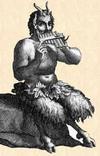
Describe EROS:
- God of: Lust, Beauty, and Love
- Roman name: Cupid
- Son of Aphrodite and Ares
- Embodiment of erotic love Has wings

Describe ARES:
- God of: War
- Roman name: Mars
- Violent god, wore shield and helmet
- Son of Zeus and Era

Describe HADES:
- God of: Death and the Underworld
- Roman name: Pluto
- Brother of Zeus and Poseidon
- Married to Persephone
- Wields the Helmet of Darkness which grants invisibility
- Three-headed dog Cerberus





